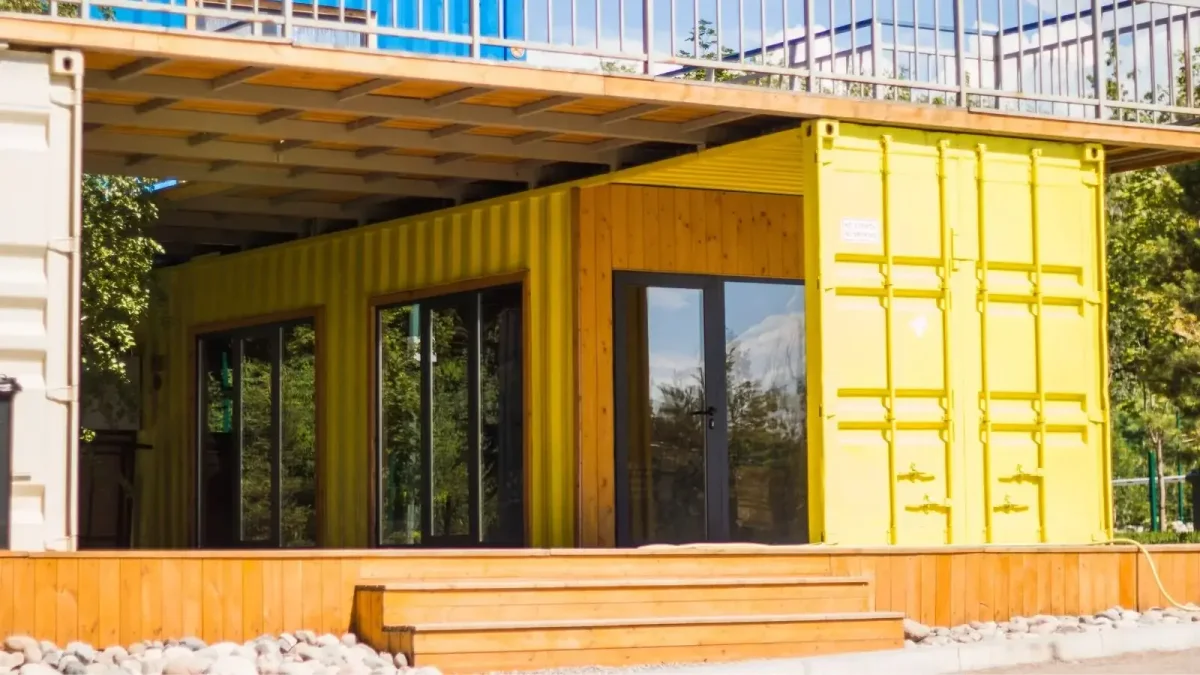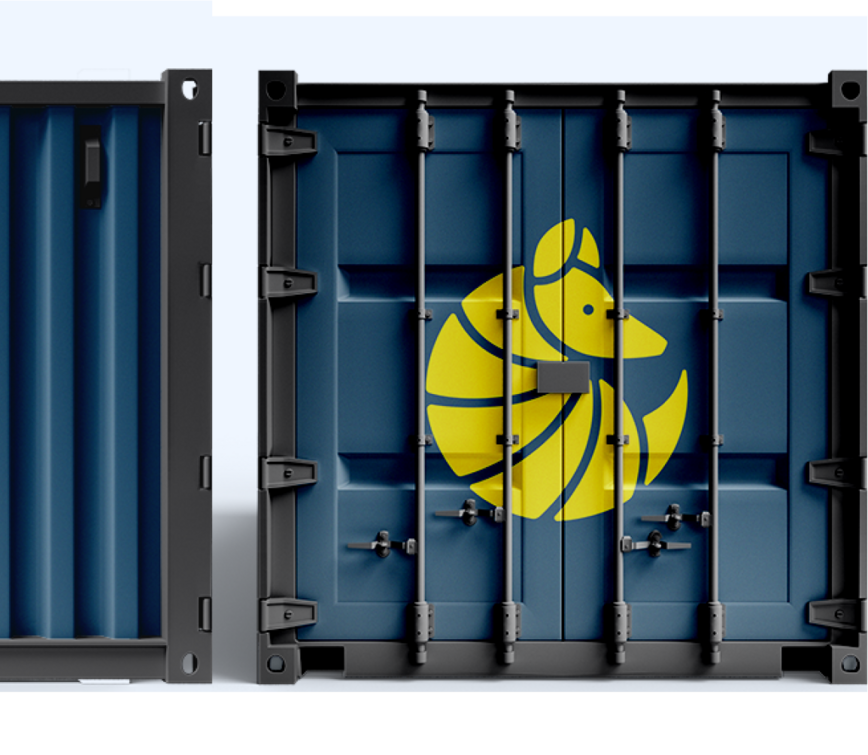Track my order
blog
The Best Foundations for Shipping Containers
The right foundation can protect your shipping container from warping, moisture, and corrosion. This guide walks through the best foundations for short- and long-term shipping container placement.



Buying a shipping container online is surprisingly simple. You place your order, schedule your delivery date, and hey presto—your shipping container arrives on a tilt-bed trailer, ready to slide into position. But there’s one aspect of container ownership that requires careful planning: preparing a shipping container foundation.
Whether you’re creating a home, office, or storage space, the right shipping container foundation can protect your container against warping, moisture, and corrosion. In this guide, we’ll explore why foundations are essential for preserving the structural integrity of your shipping container, along with the best short- and long-term container foundations available to you.
Does My Shipping Container Need a Foundation?
In an ideal world, every shipping container would be placed on a solid, perfectly flat surface made from concrete, asphalt, or compact jagged gravel. This ensures that the container’s weight is evenly distributed across its corner castings—the container’s primary load-bearing points—protecting the container’s structural integrity long-term.
In reality, we don’t always have the time—or means—to pour a perfectly level concrete slab. And there are certain instances when that’s okay. For example, if you’re using a shipping container to relocate your belongings from one house to another in the span of a weekend, any temporary resting spot that is flat, level, and solid should be fine. However, if you’re planning to keep your shipping container in the same location for longer (weeks, months, or even years), then placing your shipping container on a proper foundation is absolutely essential.
Why is a Foundation so Important for a Shipping Container?
A Foundation Prevents Your Container from Sinking
Placing your shipping container on a solid foundation prevents it from sinking into the ground. Remember: shipping containers are already incredibly heavy when empty. And the more cargo you add, the more that weight increases. Unless the ground below your container is rock-solid—literally—it may not be able to support the weight of a shipping container long-term.

Did You Know?
An empty 20ft shipping container weighs 5,181 lbs, while an empty 40ft shipping container weighs 8,267 lbs. For a more extensive breakdown of container weights and dimensions, consult our container dimensions guide.
Your area’s soil type can exacerbate the risk of sinkage. Take clay as an example. Clay is soft, wet, and swells and contracts with changes in temperature and precipitation. These are all qualities you’d want on a potter’s wheel—but they’re not ideal for supporting thousands of pounds of steel. Other surfaces that can cause your container to sink over time include mud, soft grass, and sand. To check the soil composition in your area, consult this soil composition map.
A Foundation Keeps Your Container Level
Placing a shipping container on the right foundation will keep it level on a long-term basis. If your shipping container’s weight is not evenly distributed across its corner castings, your container may shift and warp over time, leading to serious structural problems. Warping may result in your container's floor, walls, and roof becoming visibly uneven. If the frame of your container’s ISO cargo doors start to shift, it will become increasingly difficult to open and close them.
If you’ve converted your shipping container into a multi-level house, shifting can cause the separate levels to become uneven. Any windows and doors installed in the building might not open and close properly. In a worst-case scenario, your container home could lose structural stability and require intensive renovations to restore its integrity.
A Foundation Minimizes Container Corrosion
Creating a shipping container foundation reduces the risk of groundwater reaching your conex box, which can lead to corrosion and rust accumulating on its base. This can be achieved in one of two ways:
• Elevating your container: Some foundations, such as railroad ties or pier foundations, raise the bottom of your container off the ground, preventing groundwater from touching the bottom and creating rust.
• Creating a barrier: Other types of foundations, such as gravel pads and slab foundations, create a thick barrier between the shipping container and the ground, preventing groundwater from touching the base of the container.
Both approaches reduce the risk of severe corrosion, which can in turn lead to holes and leaks.

How Do You Choose a Foundation for Your Shipping Container?
To choose the right foundation for your shipping container, you’ll need to take your property’s soil type and the local climate into account. You’ll also need to consider how long you plan to place your container in its resting spot, and how much you’re willing to spend on creating a foundation.
• Duration of Placement: If you’re keeping your shipping container in a single spot for several weeks, you can use a short-term foundation. If you’re planning on keeping your shipping container in that location permanently, you’ll need a long-term foundation.
• Soil type: If your local area has a soft soil type, you’ll need a foundation that permeates the soft soil (below the freeze line) and into the more solid earth beneath.
• Climate: If you live in an area that is prone to flooding, you may want to consider a foundation that elevates the container, reducing the risk of rust and corrosion.
• Budget: Shipping foundations vary in complexity—and subsequently, cost. If you're working with a tight budget, you may want to avoid a foundation that requires extensive excavation or construction.
If in doubt, talk to a professional contractor or structural engineer about which foundation is right for your shipping container plans.
The Best Short-Term Foundations for Shipping Containers
If your shipping container is not going to stay in the location forever and in a matter of weeks or months, you’re going to move it, you’ll want to look into a temporary foundation. The three most popular temporary foundations are cement blocks, railroad ties, and gravel pads.
• Cement blocks: This approach is also known as “blocking”, and involves propping your shipping container on top of concrete blocks. The weight of the shipping container should keep the concrete foundation blocks firmly in place. Blocking is a quick and effective foundation for short-term container placements. However, try not to stack too many concrete blocks on top of each other. The higher you stack the blocks, the less sturdy the foundation will be.

• Railroad ties: Railroad ties are rectangular pieces of wood used to support train rails and prevent them from sinking or shifting. Railroad ties can also be used to keep shipping containers off of the ground.

• Gravel pad: A gravel pad is a compacted layer of crushed stone or gravel used as a foundation for shipping containers. It provides a stable, well-draining surface that prevents sinking, shifting, and moisture buildup. To create a gravel pad, a layer of crushed rock (typically 4–6 inches deep) is spread and compacted to create a firm, level surface. Some installations use a geotextile fabric underneath to prevent sinking into soft soil.
Cement blocks and railroad ties will raise your shipping container off the ground, which will prevent water from pooling around the bottom and causing corrosion. The foundation styles can also make moving your shipping container a little easier when you no longer need it to be in that location. The materials aren’t attached to the container, so the container can be picked up with a forklift or crane without difficulty.
The Best Long-Term Foundations for Shipping Containers

If your shipping container is going to stay in the same spot long term, you’ll want to rest it on a foundation that will keep it level and away from groundwater permanently.
Long-term foundation options are especially important when you’re building a shipping container house. You should never use a short-term foundation option on a shipping container house. A short-term foundation can’t offer long-term support, and when used longer than intended, can result in shipping container damage that could prove costly. You might also find that your local zoning regulations only allow shipping container houses that are on permanent foundations. Houses without these foundations will be considered zoning violations.
The most popular long-term shipping container foundations are slab foundations, strip foundations, pile foundations, and pier foundations.
Concrete Slab Foundation
A concrete slab foundation is a flat, solid base made of poured concrete. It evenly distributes the container’s weight, prevents sinking, and protects the underside from moisture, pests, and corrosion.
Concrete Strip Foundation

Another long-term solution is a concrete strip foundation (also known as a trench foundation). It is made of a series of sunken concrete walls instead of one full slab. One of the biggest advantages of this foundation style for shipping container homes is that it leaves room for utility lines and plumbing to go beneath the house.
Pile Foundation
A pile foundation is made up of solid steel piles (cylindrical tubes) that are driven deep into the ground and capped with concrete. It is an ideal foundation style for shipping container homes in regions with softer soil.
Pier Foundation
A pier foundation is a very popular foundation for shipping container homes and other permanent structures. It is very similar to a pile foundation. Cylindrical concrete piers (often reinforced with steel) are placed into the ground until they rest on compact soil. Each pier supports a shipping container corner, and sometimes its middle points for stronger weight distribution.
The Best Short-Term Foundations for Shipping Containers
Don’t risk cutting corners when choosing a foundation for your shipping container. By following the steps outlined, you can ensure that your container has a solid foundation that is level, removed from groundwater, and properly anchored. Taking the time to plan and execute a proper foundation will increase the lifespan of your shipping container, whether you are using it for storage, as a home, or for any other purpose.

About Nina Barango
Nina Barango is an experienced content marketer and container expert with a proven track record in the tech and logistics industry. Having worked with various startups and SMEs, she bridges the world of marketing, tech and shipping containers. When she's not creating content that'll revolutionize global container trade, you can find Nina reading a book or mastering her video editing skills.







Continue Shopping
Loading cart